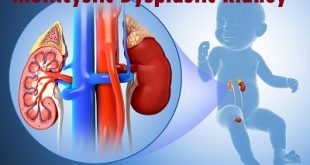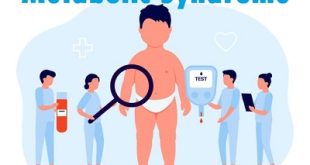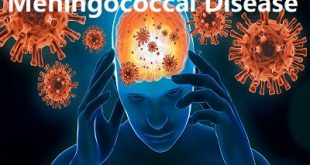Definition
Macular degeneration is a common, painless eye condition in which the central portion of the retina deteriorates and does not function adequately. There is no cure for macular degeneration, but it can be treated with vitamins, laser therapy, medications, and vision aids.
Epidemiology of macular degeneration
The AMD had a high rate of prevalence amongst the patients (5%) presenting at the ophthalmology clinics. Most of these cases (82%) were having dry form, while an important proportion was also having wet AMD (18%). Interestingly, women constituted a higher proportion (66%) of AMD patients compared to men (34%). In majority of patients the onset of condition was progressive (82%) while an important population had an abrupt onset (18%) with either one (18%) or both eyes affected (82%). AMD is associated with other ocular conditions like cataract (78%), pseudophakia (27%), glaucoma (2%) and vitreous degeneration (3%). The loss of vision cause severe psychological disturbances in affected people. In addition to the associated ocular disorders, we observed that a high proportion of AMD patients had accompanying systemic diseases (70%). These conditions included hypertension, hypercholesterolemia (72%), obesity (40%) and depression (90%).
Types of macular degeneration
Macular degeneration is diagnosed as either dry (non-neovascular) or wet (neovascular). Neovascular refers to growth of new blood vessels in an area, such as the macula, where they are not supposed to be. The dry form is more common than the wet form, with about 85 to 90 percent of AMD patients diagnosed with dry AMD. The wet form of the disease usually leads to more serious vision loss.
Dry macular degeneration (non-neovascular)
Dry AMD is an early stage of the disease and may result from the aging and thinning of macular tissues, depositing of pigment in the macula or a combination of the two processes.
Dry macular degeneration is diagnosed when yellowish spots known as drusen begin to accumulate in and around the macula. It is believed these spots are deposits or debris from deteriorating tissue.
Gradual central vision loss may occur with dry macular degeneration but usually is not nearly as severe as wet AMD symptoms. However, dry AMD through a period of years slowly can progress to late-stage geographic atrophy (GA) gradual degradation of retinal cells that also can cause severe vision loss.
Wet macular degeneration (neovascular)
In about 10 percent of cases, dry AMD progresses to the more advanced and damaging form of the eye disease. With wet macular degeneration, new blood vessels grow beneath the retina and leak blood and fluid. This leakage causes permanent damage to light-sensitive retinal cells, which die off and create blind spots in central vision.
Choroidal neovascularization (CNV), the underlying process causing wet AMD and abnormal blood vessel growth, is the body’s misguided way of attempting to create a new network of blood vessels to supply more nutrients and oxygen to the eye’s retina. Instead, the process creates scarring, leading to sometimes severe central vision loss.
Wet macular degeneration falls into two categories:
Occult. New blood vessel growth beneath the retina is not as pronounced, and leakage is less evident in the occult CNV form of wet macular degeneration, which typically produces less severe vision loss.
Classic. When blood vessel growth and scarring have very clear, delineated outlines observed beneath the retina, this type of wet AMD is known as classic CNV, usually producing more severe vision loss.
Risk factors
The biggest risk factor for Macular Degeneration is age. Your risk increases as you age, and the disease is most likely to occur in those 55 and older.
Other risk factors include:
Genetics – People with a family history of AMD are at a higher risk.
Race – Caucasians are more likely to develop the disease than African-Americans or Hispanics/Latinos.
Smoking – Smoking doubles the risk of AMD.
Causes of macular degeneration
- The causes of macular degeneration are unknown, but the risk grows with age. Because it’s extremely rare in people under age 50, the condition is usually referred to as age-related macular degeneration (AMD).
- There are some known risk factors for macular degeneration. Smoking may increase your chances of developing the condition and seems to speed up its progress. High cholesterol levels, high blood pressure, obesity, and a diet lacking in dark green leafy vegetables and omega-3 fatty acids may also be associated with macular degeneration. Women seem to be at a higher risk than men.
- Macular degeneration runs in some families but not in all. Recent studies of twins suggest that both genes and environment contribute to the onset of macular problems. Wet macular degeneration, at least, seems to be more common in people with poor cardiovascular health. Although it only accounts for about 10% of the cases, wet macular degeneration is responsible for 90% of the blindness caused by this disease.
Symptoms of macular degeneration
Macular degeneration is a painless condition. Symptoms usually develop slowly and typically include:
- Difficulty reading or performing activities that require fine vision
- Need for brighter lighting when reading or doing close-up work
- Difficulty adapting to low levels of light
- Reduced intensity or brightness of colours
- Gradual increase in the cloudiness of central vision
- Distortion, i.e. straight lines appear wavy or crooked
- Distinguishing faces becomes difficult
- Dark patches or empty spaces appear in the centre of your field of vision.
If you experience any of these symptoms you should contact your optometrist or ophthalmologist promptly. Early diagnosis and treatment may reduce vision loss and, in some people, may improve vision.
Diagnosis and test
- Your doctor can check you for age-related macular degeneration when you see him for a routine eye exam. An early diagnosis will let you start treatment that may delay some symptoms or make them less severe.
- He’ll test your vision and also examine your retina — a layer of tissue at the back of your eye that processes light. He’ll look for tiny yellow deposits called drusen under the retina. It’s a common early sign of the disease.
- Your doctor may also ask you to look at an Amsler grid — a pattern of straight lines that’s like a checkerboard. If some of the lines appear wavy to you or some of them are missing, it could be a sign of macular degeneration.
Tests
If your doctor thinks you have age-related macular degeneration, he may want you to have one or both of these exams:
Optical coherence tomography (OCT). It’s a special photograph that shows a magnified 3D image of your retina. This method helps your doctor see if your retinal layers are distorted. He can also see if swelling is getting better or worse if you had treatment with injections or laser.
Fluorescein angiography. In this procedure, your doctor injects a dye into a vein in your arm. He takes photos as the dye reaches your eye and flows through the blood vessels of the retina. The images will show new vessels or vessels that are leaking fluid or blood in the macula — a small area at the center of your retina.
Treatment and medications
Currently, there are no medical treatments available for dry macular degeneration. However, because it usually progresses slowly, many people with the dry form can live relatively normal and productive lives, especially if only one eye is affected.
Several medical treatments are available for wet macular degeneration, although none can cure the condition. The aim of these treatments is to stabilise and maintain existing vision for as long as possible. In some cases, vision can improve. Treatments for wet macular degeneration include:
Medications
Drugs called anti-vascular endothelial growth factor (anti-VEGF) agents can help stop the growth and leaking of new blood vessels in the retina. These drugs are injected directly into the eye. Anti-VEGF drugs available in New Zealand include bevacizumab (Avastin), ranibizumab (Lucentis), and aflibercept (Eylea).
Photodynamic therapy
This procedure involves using light to activate a medication that is injected into the arm and travels to blood vessels in the eye. Once activated the medication causes abnormal blood vessels in the eye to close and stop leaking.
Photocoagulation
In certain situations, a high-energy laser beam can be used to destroy and seal leaking blood vessels under the macula.
Natural treatment
- Consume a High-Antioxidant Diet and avoid Anti-inflammatory foods such as caffine, alcohol, added sugar, and processed/packaged meat products.
- Supplement to Protect the Eyes: Bilberry (160 mg twice daily), Omega-3 fish oil (1,000 mg daily), Astaxanthin (2 mg per day), Zeaxanthin (3 mg daily), Lutein (15 mg daily), & essential oils such as Frankincense oil, helichrysum oil, and cypress oil.
- Quit Smoking: Avoiding smoking is one of the most beneficial things you can do to protect your vision — and it’s even better that you don’t start to begin with!
Lifestyle changes
The following lifestyle measures may reduce the risk of developing macular degeneration or help to prevent vision loss if macular degeneration has already been diagnosed:
- Regular eye checks
- Stop smoking
- Exercise regularly and keep your weight down
- Manage other diseases, such as cardiovascular disease, high blood pressure, and high blood cholesterol
- Eat a variety of fruits, vegetables, and leafy greens – these foods contain antioxidant vitamins that may reduce the risk of developing macular degeneration
- Use healthy unsaturated fats, such as olive oil, in cooking and salads
- Include fish and nuts in your diet – these foods contain omega-3 fatty acids, which may reduce the risk of developing macular degeneration
- In consultation with your doctor, consider taking zinc and antioxidant vitamin (A, C, and E) supplements
- Protect your eyes from sunlight, especially when young
- Consider a suitable supplement ask you optometrist or ophthalmologist for their recommendation.
 Diseases Treatments Dictionary This is complete solution to read all diseases treatments Which covers Prevention, Causes, Symptoms, Medical Terms, Drugs, Prescription, Natural Remedies with cures and Treatments. Most of the common diseases were listed in names, split with categories.
Diseases Treatments Dictionary This is complete solution to read all diseases treatments Which covers Prevention, Causes, Symptoms, Medical Terms, Drugs, Prescription, Natural Remedies with cures and Treatments. Most of the common diseases were listed in names, split with categories.








this is a good information.
Neolife is a good supplements to take care of ARMD
please what about the herbs
Natural treatments are updated in the post please find it out.
couldn’t find Glu
coma
Soon we will update about glaucoma.
how to prevent the eyes increaseing number????
Consult with an ophthalmologist and get diagnosed first to find the problem in your eye.
thanks for these important information